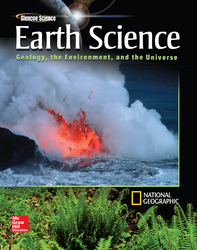1 <a onClick="window.open('/olcweb/cgi/pluginpop.cgi?it=jpg::::/sites/dl/free/0078746361/561674/16_pertab_ca_032c.jpg','popWin', 'width=NaN,height=NaN,resizable,scrollbars');" href="#"><img valign="absmiddle" height="16" width="16" border="0" src="/olcweb/styles/shared/linkicons/image.gif"> (13.0K)</a> A) Plasma B) solid C) liquid D) gas 2 <a onClick="window.open('/olcweb/cgi/pluginpop.cgi?it=gif::::/sites/dl/free/0078746361/561661/ad.GIF','popWin', 'width=NaN,height=NaN,resizable,scrollbars');" href="#"><img valign="absmiddle" height="16" width="16" border="0" src="/olcweb/styles/shared/linkicons/image.gif"> (18.0K)</a> A) baking soda B) sugar C) distilled water D) cornstarch 3 A) helium ions B) hydrogen ions C) oxygen ions D) hydroxide ions 4 A) an ionic bond B) a covalent bond C) a compound D) a chemical reaction 5 A) radioactivity number B) isotopic number C) atomic number D) mass number 6 A) its isotopes B) the valence electrons C) the size of the nucleus D) the number of energy levels 7 A) hydrogen B) water vapor C) neon D) plasma 8 A) a gas B) molecule C) an ionic compound D) a covalent bond 9 A) a solid B) matter C) a gas D) an element 10 A) electrons only B) neutrons and electrons C) protons and neutrons D) protons only 11 A) evaporation B) sublimation C) melting D) condensation 12 <a onClick="window.open('/olcweb/cgi/pluginpop.cgi?it=gif::::/sites/dl/free/0078746361/561674/15_caf2_ca_031c.gif','popWin', 'width=NaN,height=NaN,resizable,scrollbars');" href="#"><img valign="absmiddle" height="16" width="16" border="0" src="/olcweb/styles/shared/linkicons/image.gif"> (10.0K)</a> A) hydrogen B) ionic C) metallic D) covalent 13 A) gains, sublimation B) gains, condensation C) releases, evaporation D) releases, condensation 14 A) It occurs in one of three states. B) It's a compound. C) It has ionic bonds. D) It's a polar molecule. 15 <a onClick="window.open('/olcweb/cgi/pluginpop.cgi?it=jpg::::/sites/dl/free/0078746361/561710/ge03_sc3_5.jpg','popWin', 'width=NaN,height=NaN,resizable,scrollbars');" href="#"><img valign="absmiddle" height="16" width="16" border="0" src="/olcweb/styles/shared/linkicons/image.gif"> (34.0K)</a> A) plasma B) solid C) liquid D) gas 16 A) brewed coffee B) cereal and milk C) melted rock material D) lemonade 17 <a onClick="window.open('/olcweb/cgi/pluginpop.cgi?it=gif::::/sites/dl/free/0078746361/561710/15_n2_ca_031c.gif','popWin', 'width=NaN,height=NaN,resizable,scrollbars');" href="#"><img valign="absmiddle" height="16" width="16" border="0" src="/olcweb/styles/shared/linkicons/image.gif"> (5.0K)</a> A) ionic B) metallic C) hydrogen D) covalent 18 A) gas B) molecule C) polyatomic ion D) element 19 <a onClick="window.open('/olcweb/cgi/pluginpop.cgi?it=jpg::::/sites/dl/free/0078746361/561710/ge03_ctp_19.jpg','popWin', 'width=NaN,height=NaN,resizable,scrollbars');" href="#"><img valign="absmiddle" height="16" width="16" border="0" src="/olcweb/styles/shared/linkicons/image.gif"> (26.0K)</a> A) oxygen, silicon, aluminum B) magnesium, oxygen, aluminum C) iron, oxygen, silicon D) calcium, potassium, nitrogen 20 A) The amount of matter decreases when it becomes solid or liquid. B) Some matter disappears each time it changes state. C) The amount of matter stays the same as it is changed from one form to another. D) The amount of matter increases when it becomes a gas.





